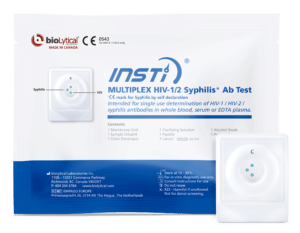- Our Productsclose
Our Products
Easy. Quick. Accurate.
- HIV and Testing
- Stories
- INSTI Times
- Our Productsclose
Our Products
Easy. Quick. Accurate.
- HIV and Testing
- Stories
- INSTI Times
In the realm of infectious diseases, Elizabethkingia is a genus that often flies under the radar but holds significant importance due to its impact on human health. This bacterium, named after the American bacteriologist Elizabeth O. King who discovered it in the 1950s, encompasses several species, with Elizabethkingia meningoseptica (formerly Chryseobacterium meningosepticum) being among the most notable for its role in human infections. This comprehensive blog post aims to shed light on Elizabethkingia, exploring its characteristics, the infections it causes, and the challenges it presents in both diagnosis and treatment.

What is Elizabethkingia?
Elizabethkingia is a genus of Gram-negative bacteria found in the environment, particularly in soil and water. These bacteria are characterized by their rod shape and are known for their resistance to many common antibiotics, making infections difficult to treat. While Elizabethkingia is not typically a threat to healthy individuals, it poses a significant risk to those with compromised immune systems, newborns, and the elderly.
Infections Caused by Elizabethkingia
Elizabethkingia can cause a range of infections, though it is most commonly associated with meningitis in newborns, pneumonia, bloodstream infections, and skin infections. One of the most concerning aspects of Elizabethkingia infections is their high mortality rate, particularly in cases involving bloodstream infections where timely and effective treatment is critical.
Diagnosis and Treatment Challenges
Diagnosing Elizabethkingia infections can be challenging due to the bacteria’s rarity and the nonspecific nature of the symptoms it causes. Standard laboratory tests may not always readily identify the bacterium, requiring specialized techniques for accurate detection. This delay in diagnosis can lead to worsened outcomes for patients.
Treatment of Elizabethkingia infections is complicated by the bacterium’s inherent resistance to many antibiotics. Clinicians often have to rely on a combination of antimicrobial susceptibility testing and empirical therapy to identify effective treatment options. Even with appropriate antibiotics, the treatment of these infections can be complicated, requiring extended courses of therapy and, in some cases, surgical intervention.
Preventing Elizabethkingia Infections
Prevention of Elizabethkingia infections primarily involves infection control measures in healthcare settings, such as rigorous hand hygiene and sterilization procedures. Given the bacterium’s presence in the environment, it is challenging to completely eliminate the risk of infection. However, healthcare facilities can reduce the incidence of nosocomial (hospital-acquired) infections through strict adherence to infection control guidelines.
Conclusion
Elizabethkingia may not be as widely recognized as other infectious agents, but its impact on vulnerable populations and the challenges it presents in treatment underscore the importance of continued research and awareness. As antibiotic resistance becomes an increasingly pressing issue globally, understanding and addressing infections caused by resistant organisms like Elizabethkingia is crucial for public health. Efforts to improve diagnostic capabilities, develop effective treatment regimens, and implement robust infection control measures will be key in managing the risks associated with this formidable bacterium.
Our website uses cookies. By continuing to browse our site you are agreeing to our Privacy Policy.



